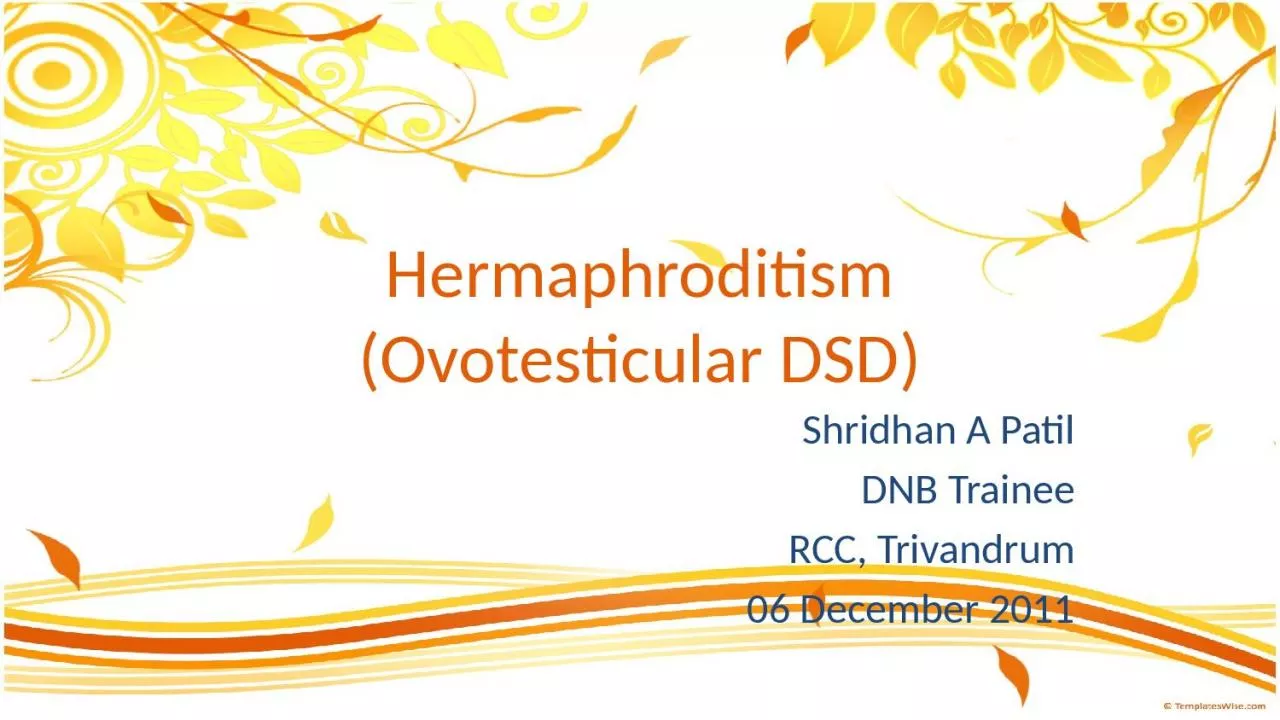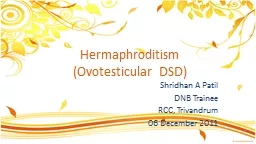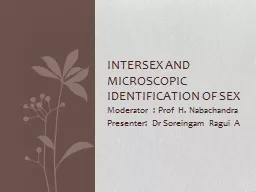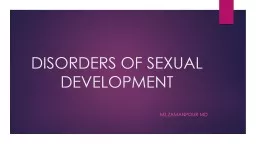PPT-Hermaphroditism ( Ovotesticular
Author : Ruggedman | Published Date : 2022-08-01
DSD Shridhan A Patil DNB Trainee RCC Trivandrum 06 December 2011 Disorders of Sexual Development DSDs Terminology Chromosomal sex Describes X andor Y complement
Presentation Embed Code
Download Presentation
Download Presentation The PPT/PDF document "Hermaphroditism ( Ovotesticular" is the property of its rightful owner. Permission is granted to download and print the materials on this website for personal, non-commercial use only, and to display it on your personal computer provided you do not modify the materials and that you retain all copyright notices contained in the materials. By downloading content from our website, you accept the terms of this agreement.
Hermaphroditism ( Ovotesticular: Transcript
DSD Shridhan A Patil DNB Trainee RCC Trivandrum 06 December 2011 Disorders of Sexual Development DSDs Terminology Chromosomal sex Describes X andor Y complement Determined at fertilization. J. theor. Biol. (1981) 89,523-532 GERALD BORGIA~ AND JAMES BLICK Museum of Zoology, University of Michigan, Ann Arbor, ‘r Current address: Department of Biology, University of Chicago, IL 6063 (. Ovotesticular. DSD). Shridhan. A . Patil. DNB . Trainee. RCC, Trivandrum. 06 . December. 2011. Disorders of Sexual Development (DSDs). Terminology. Chromosomal sex . Describes X and/or Y complement . . Presenter: . Dr. . Soreingam. . Ragui. A. Intersex and Microscopic Identification of Sex. Introduction. Intersex : intermingling of sexual characters of both sexes in varying degrees in one individual.. MZ.Zamanpour MD. Differentiation . of male . and. . female . external genitalia as proceeding from . a common . embryonic . anlage. Testosterone acts . at 9 . to 13 weeks of gestation to . virilize.
Download Document
Here is the link to download the presentation.
"Hermaphroditism ( Ovotesticular"The content belongs to its owner. You may download and print it for personal use, without modification, and keep all copyright notices. By downloading, you agree to these terms.
Related Documents




